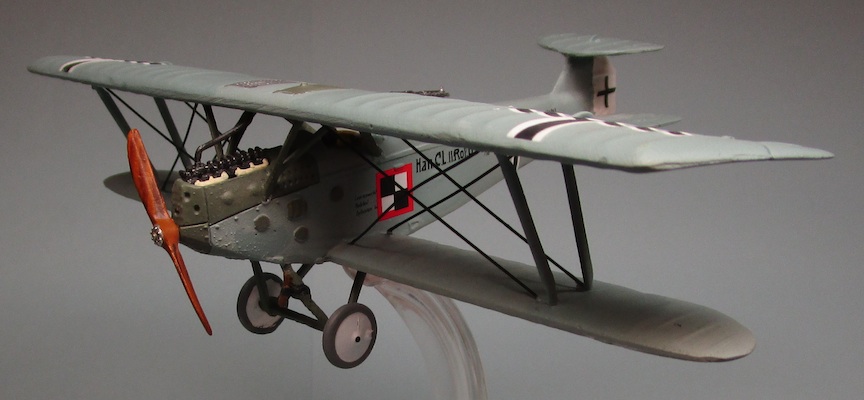Hannover CL.II

Luftstreitkrafte, 1918
(Wings of the Great War WW11901)
- Engine: One 180 h.p. Argus As.III inline
- Span: 38 ft 4 in
- Length: 24 ft 10 in
- Height: 9 ft 2 in
- Weight: 1,577 lb empty; 2,381 lb loaded
- Crew: Two
- Max Speed: 103 mph at 2,000 ft
- Service Ceiling: 24,600 ft
- Duration: 3 hr
- Armament: One fixed, forward-firing Spandau MG and one free-firing Parabellum MG
- Notes: The Hannover CL.II was an escort fighter, produced in Germany during World War I, designed in response to a 1917 requirement by the Idflieg for such a machine to protect reconnaissance aircraft over enemy territory. It was a compact biplane of largely conventional configuration with single-bay staggered wings of unequal span. The fuselage was a thin plywood paneled, wooden monocoque design, very similar to the style of fuselage in Robert Thelen's Albatros series of single-seat fighters. The main units of the fixed tailskid undercarriage were linked by a cross-axle, and the pilot and tail gunner sat in tandem, open cockpits, with the gunner's cockpit elevated above the line of the upper fuselage to afford him a greater field of fire. For the same purpose, the aircraft featured an unusually compact empennage, with a short fin integral with the rear fuselage structure and a biplane tail unit that allowed the rear gunner to have a larger field of aftwards fire when defending the aircraft. Smaller than the usual C-class reconnaissance aircraft, it was easy for enemy pilots to mistake it for a single-seat fighter; a mistake that would bring them into the line of fire of the rear-facing dorsal gunner when closing from astern.




 Up
Up






 Up
Up